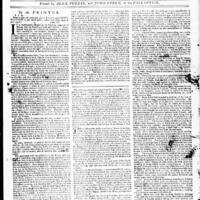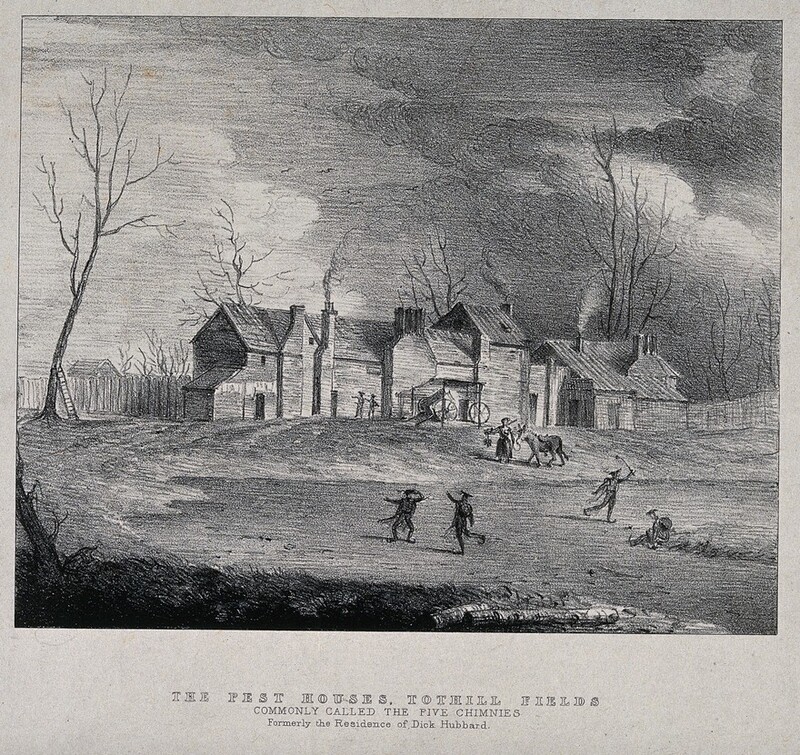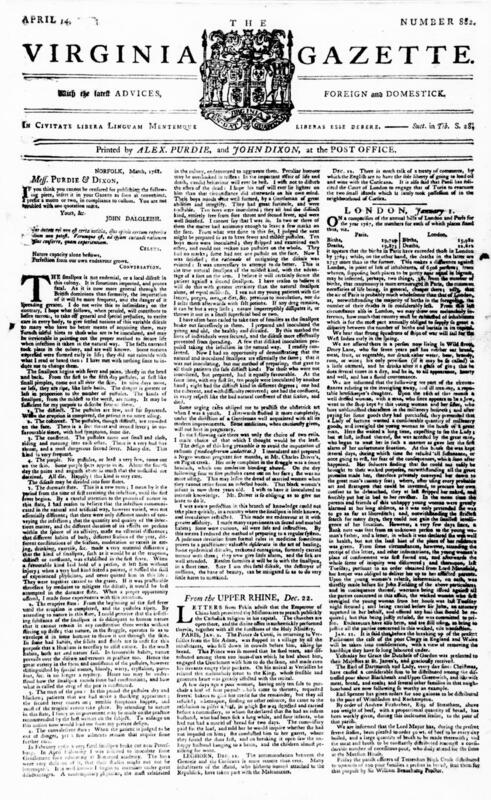The Idiosyncrasies of Inoculation
Inoculation was the primary defense against smallpox for much of the 18th century. As part of the process, organic matter from a mildly ill person was collected and transferred to a healthy patient.[1] The patient was therefore infected with a milder form of smallpox that would, in most cases, grant them an immunity to the disease without ruining their health or appearance.[2]
King George I’s court embraced inoculation after experiments on death-row prisoners in England proved successful.[3] The practice continued to spread despite the apprehension of many in Europe and the Americas. Inevitably inoculation entered public, political, and intellectual discourse with notable Enlightenment thinkers like Voltaire[4] and Benjamin Franklin[5] defending its virtues.
Inoculation remained a source of anxiety for many despite its obvious benefits. The primary concern was that an inoculated individual would spread the disease to others. If the number of infected went up, so would the demand for inoculation. Note that the procedure was not free or particularly affordable. Thus, working class populations were especially vulnerable to catching smallpox.[6] They could not artificially and safely acquire an immunity like their wealthier counterparts. This is why the Pest House came into being.
The Pest House served as a public building, built on public lands with public funding, that quarantined the sick.[7] Existing some distance from town, it was supposed to protect healthy townsfolk by isolating contagious disease. Those who contracted smallpox naturally or artificially would therefore be placed in this building until they were cleared by the doctor, mayor, and alderman. In theory. There is some question as to how involved local officials actually were, and whether or not the Pest House’s quarantine measures applied to everyone.
Inoculation practices reveal notable inequalities in the Norfolk community, for most who stayed in the Pest House were poor or enslaved. The well off Cornelius Calvert, for example, had sailors in his employ quarantined at the Pest House in 1769.[8] The three slaves who had traveled with those sailors were inoculated and given the same treatment. A year earlier, however, Calvert had his own family and servants inoculated on private property belonging to a Dr. Campbell.[9] Had his family not been forced into the Pest House by a local mob, it is likely they never would have set foot inside. For good reason too. The Pest House, as described by an anonymous Norfolk resident, was deplorable.[10] It was not clean or in any way fit for the wives and children of Norfolk’s landowners. Yet it was the only acceptable option for everyone else.
Ethical Controversies
Dr. Dalgleish was an expert in inoculation who found himself at the center of the Norfolk Riots. His expertise was well regarded by many Gentlemen in his community[11], and his work was successfully published in at least one Virginia Gazette.[12] In this publication, Dr. Dalgleish provided a strong defense for inoculation. He also admitted to experimenting on a pregnant slave.
After obtaining permission from Mr. Driver, the master, Dr. Dalgleish inoculated a slave woman to determine if the procedure would be safe for pregnant, free women. He then inoculated the woman’s child after he was born, testing how safe inoculation was for children. The doctor’s callous description of his experiments is a testament to the ethical nightmare that haunted the medical field in the 18th century. Slaves, like criminals, were unwilling test subjects in many a doctor’s quest to fine-tune treatments and save (free) lives.
Inoculation inarguably saved many by granting people immunity to smallpox in a safe, controlled environment. At the same time, it is important to recognize that the practice cannot be separated from the power structures that existed within Norfolk, Virginia. Dr. Dalgleish, the man who inoculated the town’s Gentlemen and their families, gained his experience through unethical experimentation. Certain Gentlemen and their families originally forsook the Pest House despite its sole purpose being to house the sick and inoculated. They also dismissed any notion that their inoculation would expose the disease to other, more vulnerable residents who could not afford treatment.[13] To look at the Norfolk Riots as merely an attack on science or a rejection of its value is to ignore the politics and community that defined it.
Footnotes
[1] Voltaire, The Virginia Gazette (Purdie and Dixon, VA), Aug. 11, 1768.
[2] Voltaire, The Virginia Gazette (Purdie and Dixon, VA), Aug. 11, 1768.
[3] Voltaire, The Virginia Gazette (Purdie and Dixon, VA), Aug. 11, 1768.
[4] Voltaire, The Virginia Gazette (Purdie and Dixon, VA), Aug. 11, 1768.
[5] Benjamin Franklin to John Perkins, August 13, 1752.
[6] The Virginia Gazette Postscript (Purdie and Dixon, VA), Sept. 8, 1768.
[7] The Virginia Gazette Postscript (Purdie and Dixon, VA), Sept. 8, 1768.
[8] Cornelius Calvert, The Virginia Gazette (Purdie and Dixon, VA), Jan. 09, 1769.
[9] Cornelius Calvert, The Virginia Gazette (Purdie and Dixon, VA), Jan. 09, 1769.
[10] The Virginia Gazette Supplement (Rind, VA), Aug. 25, 1768.
[11] The Virginia Gazette Supplement (Rind, VA), Aug. 25, 1768.
[12] John Dalgleish, The Virginia Gazette (Purdie and Dixon, VA), April 14, 1768.
[13] The Virginia Gazette Supplement (Rind, VA), Aug. 25, 1768.


